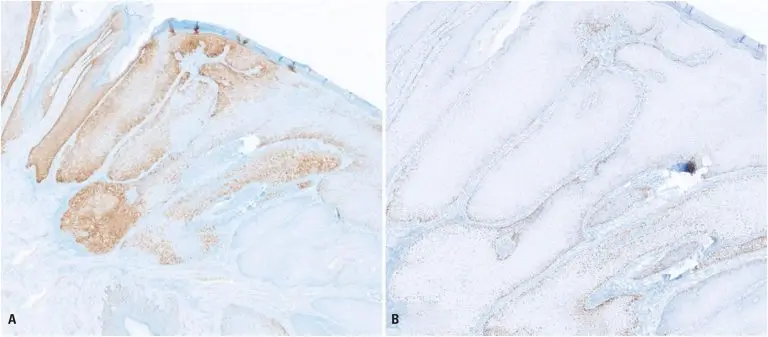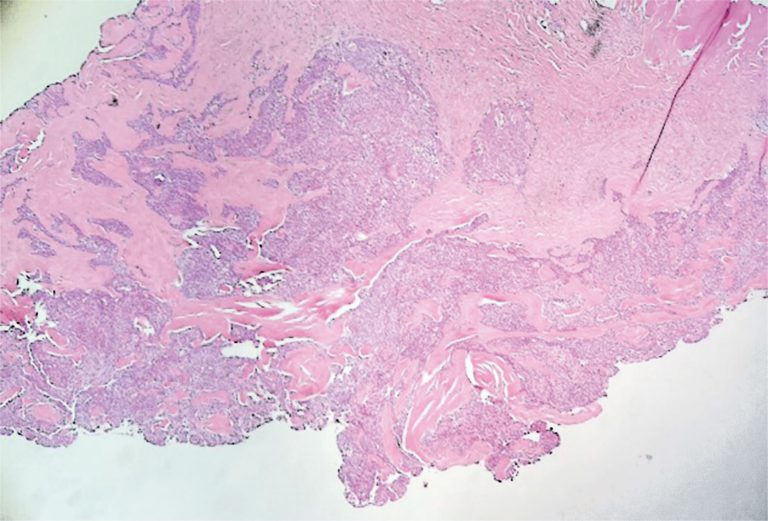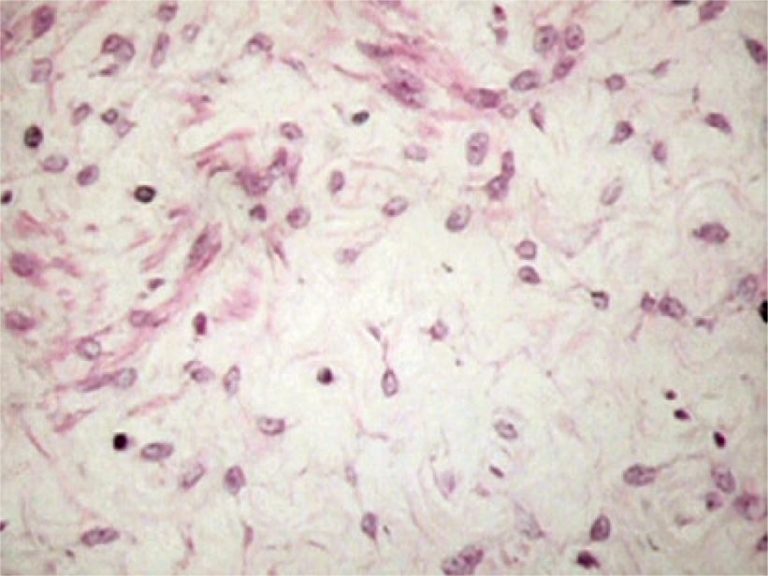13/Oct/2025
HPV-independent vulvar squamous cell carcinoma: a case report and review of the literature
DOI: 10.31744/einstein_journal/2025RC1482
ABSTRACT Vulvar cancer, a rare gynecological malignancy, accounts for 3-5% of cases and is most commonly squamous cell carcinoma. Prognosis is poorer in cancers unrelated to human papillomavirus (HPV), often associated with chronic inflammation. We report the case of a 42-year-old woman from São Paulo, Brazil, who presented with a vulvar lesion initially misdiagnosed as an ingrown hair. Despite treatment, the lesion progressed, and subsequent evaluation revealed invasive squamous cell carcinoma. Biopsy confirmed HPV-independent disease, with immunohistochemistry demonstrating aberrant p53 […]
Keywords: Female genital neoplasms; Oncologic surgery; Papillomavirus infections; Squamous cell carcinoma; Vulvar neoplasms
10/Mar/2025
Nodular vulvar lesions and its key differential diagnoses: a case report
DOI: 10.31744/einstein_journal/2025RC0362
ABSTRACT The etiologies of vulvar nodules range from infectious to neoplastic. Owing to the wide spectrum of vulvar diseases, clinical differentiation of the lesions is crucial for adequate diagnosis and management. A 46-year-old patient presented with a nodular lesion in the vulvar region that had been growing slowly for 10 years. Gynecological examination revealed the presence of a solid nodular lesion measuring approximately 3 cm in the middle third of the right labia majora without phlogistic signs or secretion discharge. […]
Keywords: Adenoma, sweat gland; Diagnosis, differential; Gynecological examination; Sweat gland neoplasms; Vulvar neoplasms
09/Jun/2015
Aggressive angiomyxoma of the vulva: case report
DOI: 10.1590/S1679-45082015RC2952
Female patient, 42-years-old, complaining of difficulty in urinating and swelling in the vulvar area for one year. Her gynecological examination showed extensive injury in the vulvar region and the biopsy done was inconclusive. The removal of the lesion was conducted. After the procedure, the patient remains free of recurrence for 15 months. This case highlights the need to consider angiomyxoma in the differential diagnosis for tumors of unknown cause in the vulvar region.
Keywords: Case reports; Myxoma/diagnosis; Vulvar neoplasms




